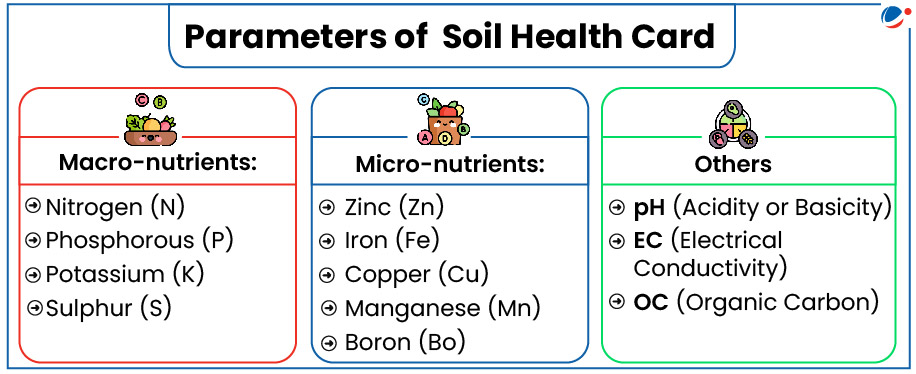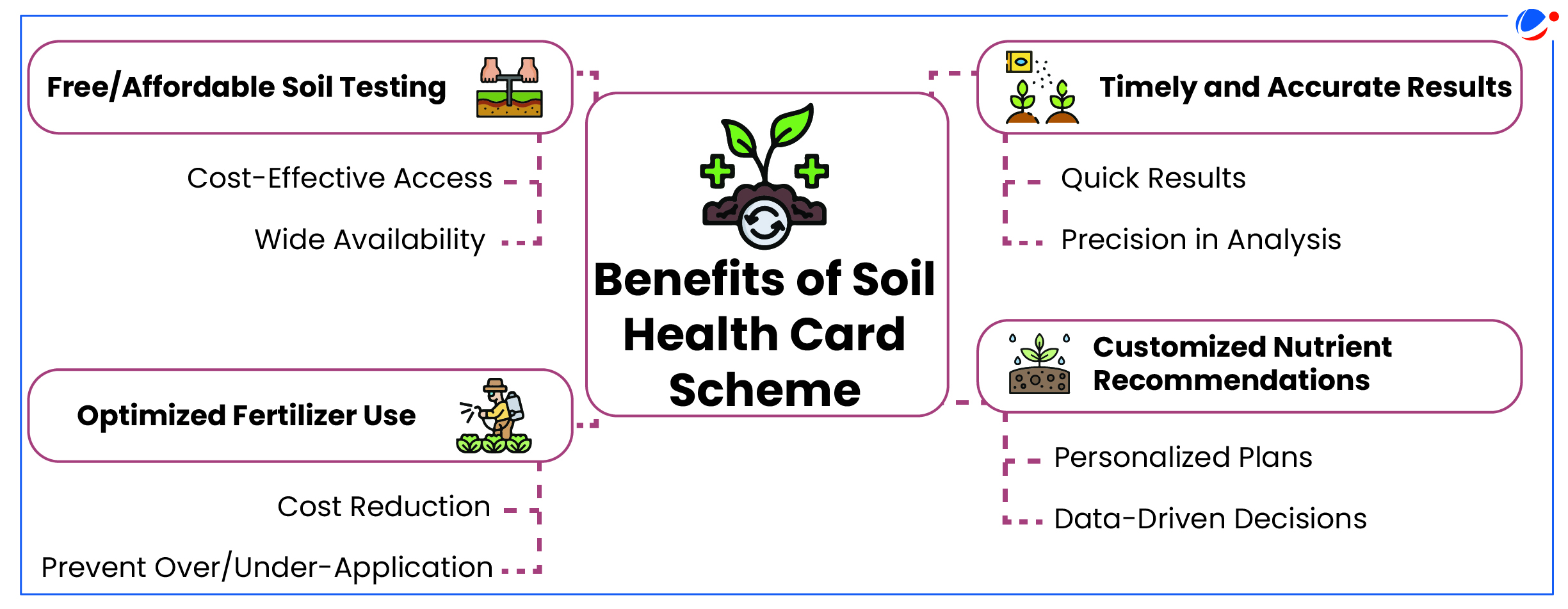Why in the News?
Recently, Soil Health Card Scheme, launched in 2015, completed 10 Years of its implementation.
More on the News
- The Scheme was introduced to assist State Governments in issuing soil health cards to all farmers in the country.
- Since 2022-23, SHCS has been integrated with PM-Rashtriya Krishi Vikas Yojana (RKVY) Cafeteria scheme as one of its components under name 'Soil Health & Fertility'.
PM Rashtriya Krishi Vikas Yojana (RKVY) Cafeteria Scheme
|
About the SHCS
- Ministry: Union Ministry of Agriculture and Farmers Welfare.
- Objectives:
- To issue soil health cards every three years to all farmers.
- To develop and promote soil test based nutrient management for enhancing nutrient use efficiency.
- To find out the type of particular soil and provide ways to improve it.

- Features of Scheme:
- Soil Health Cards: Provides information to farmers on key nutrient status of the soil along with recommendations on appropriate dosage of nutrients to be applied for improving soil health.
- Card contains status of soil with respect to 12 parameters (see infographic)
- Setting up of Village level Soil Testing Labs to test the soils.
- Soil Health Card Portal to facilitate generation of SHCs in a uniform and standardized format across country in all major languages and 5 dialects.
- Soil Health Cards: Provides information to farmers on key nutrient status of the soil along with recommendations on appropriate dosage of nutrients to be applied for improving soil health.
- Implementation: By Department of Agriculture of respective State /UTs.
- Technological Advancements:
- Integration of portal with a Geographic Information System (GIS) system to capture and show test results on a map.
- Creation of Mobile app for obtaining a Soil Health Card with enhanced accessibility, efficiency, and transparency.

Key Achievements of the Scheme
- Coverage: 24.74 crore Soil Health Cards (SHC) generated (as of February, 2025).
- Increased Coverage: Number of SHC issued to farmers increased from 16 lakh (2020-21) to 53 lakh (2024-25).
- Mapping: Soil and Land Use Survey of India generated 1,987 village-level soil fertility maps for 21 States and Union Territories.
- Labs: 8272 Soil Testing Labs have been set up.
- Funding: ₹1706.18 crore have been released to various States/UTs.
Constraints with the Scheme
- Quality and accuracy issues: Soil samples are sometimes collected improperly, leading to inaccurate test results.
- Many SHCs provide broad, one-size-fits-all recommendations instead of location-specific and crop-specific advice.
- Lack of Understanding: Many farmers are unable to understand the content, hence unable to follow the recommended practices.
- Absence of physical and micro-biological indicators: Such as soil texture, water holding capacity, and water quality and bacterial content affect the process.
- Others: Inadequate testing Infrastructure, lack of availability of recommended fertilisers and bio-fertilisers at village level, etc.
Way Forward

- Sample Collection and Testing: Identify best practices by examining across countries and different state governments practices.
- Training and Development: Appropriate training, easy to use sampling tools keeping in mind specialized and highly skill nature of job.
- Modern Labs: Soil testing labs at direct level should be equipped with Inductively Coupled Plasma Atomic Emission Spectrometry (ICP-AES) which is used to assess soil health by quantifying the elemental composition.
- Creation of Specialized body: At central as well as at state level for the management of soils with responsibility of monitoring the quality of delivery service.
- Others: Coordination among agricultural extension officers and farmers, development of Soil Health Index; reduction in subsidy for NPK to rationalize fertilizer usage, etc.






